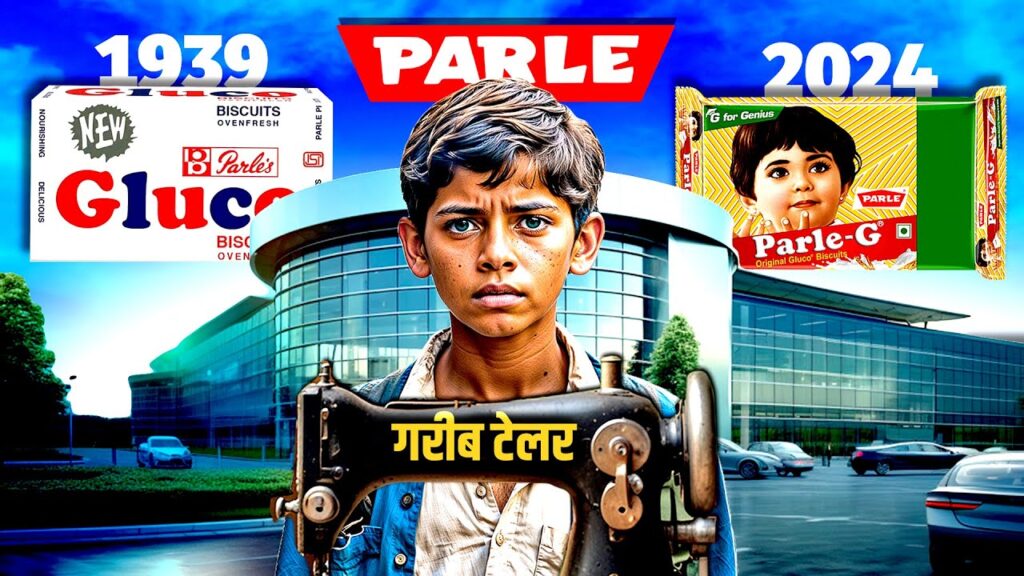The Journey of Parle-G: From Local Delicacy to Global Icon

Parle-G is more than just a biscuit; it’s a symbol of nostalgia and comfort for millions of Indians. As we explore the fascinating history and evolution of this iconic brand, we uncover how it transformed perceptions, broke barriers, and became a household name across the globe. Let’s dive into the heartwarming story of Parle-G and its remarkable journey through time.
The Early Days: Changing Perceptions
In the late 19th century, biscuits were seen as a luxury item, primarily enjoyed by the British elite. They were often expensive and made with ingredients like eggs, which made them unappealing to many Hindus. The perception of biscuits as a foreign delicacy meant that they were largely avoided by the Indian middle class and the poorer sections of society.
However, this changed with the introduction of Parle-G. The brand emerged as a beacon of hope, making biscuits accessible and acceptable to all. It started with a vision to create a biscuit that everyone could enjoy, regardless of their socio-economic status.
The Birth of Parle Products
Founded by Mohanlal Dayal in 1929 in the Vile Parle area of Mumbai, Parle Products began its journey with a focus on toffees and candies. After learning the art of confectionery in Germany, Dayal returned to India with a determination to create affordable sweets for the masses.
In 1939, recognizing the gap in the market for affordable biscuits, Parle launched its first product, Parle-G, initially known as Parle Gluco. The biscuit quickly gained popularity due to its quality and low price, making it accessible to a wide audience.
The Impact of Independence
With India gaining independence in 1947, the demand for local products surged. Parle leveraged this sentiment by positioning itself as a patriotic brand, appealing to the national pride of consumers. The brand’s messaging resonated with the masses, and sales skyrocketed.
During the Second World War, Parle-G biscuits became a staple for both Indian and British soldiers, further solidifying its place in Indian culture.
Innovative Marketing Strategies
As competition grew in the 1960s, with many companies launching their versions of glucose biscuits, Parle faced challenges in maintaining its market share. To combat this, the company revamped its branding and packaging, introducing the now-famous yellow wax paper that became synonymous with Parle-G.
In 1982, the brand was officially renamed Parle-G, with the “G” standing for glucose. This rebranding was accompanied by the launch of a catchy television commercial featuring a grandfather and his grandchildren, which helped cement the biscuit’s position in the hearts of consumers.
The Power of Affordability
One of the key factors behind Parle-G’s success has been its commitment to affordability. For over 25 years, the price of a Parle-G biscuit packet remained unchanged, despite rising production costs. This strategy allowed the brand to maintain a loyal customer base, as many consumers relied on the biscuit as an economical snack option.
The brand’s management understood the importance of keeping prices stable to avoid alienating its customer base. Even a small price increase led to public outcry, which highlighted the emotional connection people had with Parle-G.
A Biscuit for Every Generation
Parle-G has transcended generations, becoming a beloved snack for children and adults alike. It’s not just a biscuit; it’s a part of childhood memories, family gatherings, and tea-time rituals. The brand has successfully created a sense of nostalgia that resonates with consumers of all ages.
From school lunchboxes to tea-time companions, Parle-G has secured its place in the daily lives of millions. Its versatility as a snack—whether enjoyed plain, dipped in tea, or used in various recipes—adds to its appeal.
Challenges and Resilience
Despite its enduring popularity, Parle-G faced significant challenges during the COVID-19 pandemic. As the demand surged, the company struggled to keep up with production. To address this, Parle partnered with local bakeries, sharing its secret recipes to ensure a steady supply of biscuits. This strategy not only alleviated production pressures but also strengthened its distribution network.
During the lockdown, Parle-G became a lifeline for many. The brand donated millions of biscuit packets to those in need, further endearing itself to the public.
The Secret Formula for Success
What sets Parle-G apart is its ability to adapt while staying true to its roots. The company has continuously innovated its product offerings, introducing new flavors and variations, all while maintaining the quality that consumers expect.
Parle has also embraced digital marketing, engaging with younger audiences through social media platforms. This shift has allowed the brand to remain relevant in an ever-evolving market.
Global Recognition
Today, Parle-G is not just a household name in India; it has gained recognition worldwide. The brand is exported to various countries, including the USA, UK, and Australia, where it continues to win over hearts and palates.
In 2011, Parle-G was recognized as the world’s largest-selling biscuit brand, a testament to its widespread appeal and consumer loyalty. The brand’s journey from a local delicacy to a global icon is a remarkable story of perseverance and innovation.
Conclusion: A Legacy of Love
Parle-G is more than just a biscuit; it’s an emotion that connects generations. Its journey reflects the changing landscape of India and the resilience of a brand that has remained close to its consumers’ hearts. As we look to the future, Parle-G is poised to continue its legacy, adapting to new challenges while cherishing the traditions that have made it a beloved snack for millions.
Whether enjoyed during tea time, as a quick snack, or incorporated into creative recipes, Parle-G will always hold a special place in the hearts of those who have grown up with it. Here’s to many more years of joy, comfort, and shared experiences with Parle-G!
